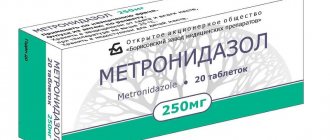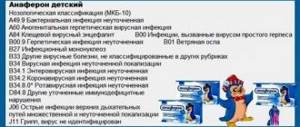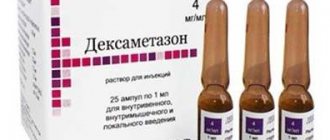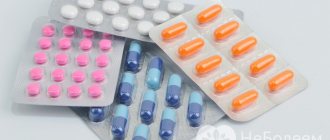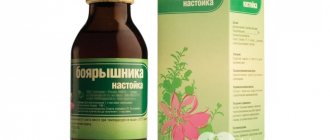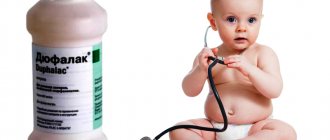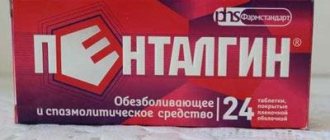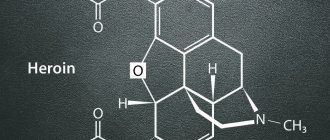Mexidol is a fairly recent development by domestic pharmacologists. The drug belongs to the group of nootropics, the active substance is oxymethylethylpyridine succinate. This component helps improve tissue respiration, which is simply necessary for many diseases that occur with hypoxia. The medication acts directly on brain cells, removes symptoms of intoxication and protects them from oxygen starvation, which can lead to cell death . Despite all the benefits of the drug in the treatment of diseases, an overdose of Mexidol is possible if the dose is greatly exceeded.
Release form of the drug Mexidol
The medicine contains the active ingredient ethylmethylhydroxypyridine, sodium metabisulfite, povidone, lactose, polyethylene glycol, titanium dioxide.
Mexidol increases the body's resistance to various injuries, protects against shock, ischemia and nervous disorders. It is an anticonvulsant and nootropic agent. The drug increases dopamine content in the brain, improves blood circulation and microcirculation. Has an effective anti-stress effect.
The medicine can be purchased in the form of tablets and ampoules for injection. They produce packs of tablets of 50 or 30 pieces. The medicine is covered with a white shell. The drugs should be stored at a temperature of no more than 25 degrees in a dark place. The standard shelf life of the medicine is 3 years.
You can buy Miksidol tablets and ampoules at any pharmacy without a doctor's prescription. Prices vary everywhere, but the average cost of a medicine can be noted:
- Mexidol in tablets of 0.125 g - 50 pieces cost 410-460 rubles.
- Mexidol in tablets of 0.125 g - 30 tablets will cost 270-300 rubles.
- Mexidol in ampoules of 5 ml - 5 pieces cost -450-500 rubles.
- Mexidol in ampoules of 2 ml - 10 ampoules cost 460-510 rubles.
General information about Ethoxidol
The medication is prescribed for the development of neuroses, frequent stress and depression, which were provoked by a general weakening of the body. The medicine is widely used in the field of pediatrics, neurology, psychiatry, narcology and ophthalmology. Has nootropic and anticonvulsant effects.
The principle of action of Ethoxidol
The medicine is available in two forms: injection solution and chewable tablets. The active ingredient is ethylmethylhydroxypyridine malate. The following auxiliary components are used: glycine, lactose monohydrate, MCC, magnesium stearate, povidone.
Prices for Mexidol drugs
Ethylmethylhydroxypyridine succinate in the drug improves blood supply to the brain and the rheological properties of blood, accelerates cellular metabolism, lowers cholesterol levels, therefore Mexidol is used for vascular spasms and severe intoxications.
It exhibits anticonvulsant and nootropic effects, increases resistance to hypoxic conditions (ischemia, shock, alcohol and neuroleptic poisoning) and the effects of harmful factors.
The drug affects brain tissue, preventing ischemia and oxygen starvation. As a result of Mexidol therapy, patients recover speech, memorization and other important skills much faster after severe intoxication.
Principles of action of drugs
The components that make up Mexidol help reduce the concentration of free radicals. They also provide membrane protection. The medication has anti-stress, anti-hypoxic and anti-convulsant effects on the body.
This is a nootropic drug that helps improve memory and mental activity. Helps cope with insomnia and inhibits degenerative processes that can occur in the human brain.
The drug improves the viscosity of the membrane and resists the peroxidation of its lipids, helping to accelerate the process of transmitting electrical impulses. This medicine is used to prevent the development of Parkinson's disease.
In some cases, it is prescribed to normalize cholesterol levels in the body. Under the influence of the medication, blood fluidity and viscosity, as well as its circulation, improves.
Ethoxydol also suppresses the formation of free radicals. In addition, it has anti-ischemic properties, limiting the affected area and improving blood flow in the ischemic area. The drug also has a hypolipidemic effect. It also helps restore the body after intoxication with drugs or alcohol.
When is Mexidol prescribed?
The drug is used to treat hypoxic conditions and increase the body's resistance to the influence of harmful factors. Mexidol has minor side effects, so you should read the instructions before use.
Indications for use:
- consequences of World Cup injury;
- rehabilitation period after a transient attack, ischemic stroke;
- VGSD;
- encephalopathy with circulatory failure;
- neuroses and anxiety disorders;
- alcohol withdrawal;
- condition after myocardial infarction;
- poisoning with neuroleptics;
- acute purulent lesions of the peritoneum.
The pharmacy chain has the product in two pharmacological forms: tablets and solutions for IV and IM injections. For mild cases of the disease, the drug is prescribed in tablet form; for severe cases, administration of a solution is indicated.
For preventive purposes, Mexidol tablets are used for asthenic conditions, exposure to adverse factors and high physical activity.
Side effects
Individual intolerance to components or non-compliance with doctor's recommendations may cause side effects. In most cases, the patient develops:
- Feeling of dryness or unpleasant taste in the mouth.
When administered intravenously, there is a surge of heat that spreads throughout the body.- Reduced reaction speed. Therefore, you should be as careful as possible if you need to drive a car.
- Lack of air. This sensation may occur as a result of incorrect insertion. In order for the patient’s condition to normalize, it is necessary to adjust the rate at which the medication enters the body.
In case of an overdose, a person begins to vomit. Gas formation may occur. If you take the medicine excessively, you should consult a doctor. Often in such situations, symptomatic therapy is necessary.
The appearance of the slightest signs of adverse reactions is a reason to contact a medical facility. The specialist will be able to assess the general condition and prescribe, if necessary, a more suitable remedy.
Side effects from Mexidol
The doctor must warn the patient when Mexidol is prohibited from taking. If you neglect these recommendations, you can significantly harm your health. So, the drug is prohibited in the following cases:
- If the patient has kidney problems, liver failure.
- In case of hypersensitivity to the composition of the drug. The patient may be allergic to one of the components of Mexidol. In this case, you need to stop therapy with this drug.
- Prohibited for children under 16 years of age.
- Should not be taken by pregnant women.
- Dangerous for the baby during breastfeeding. The substances of the drug can reach the child through milk and seriously harm his health.
If you have an individual intolerance to the product, you should immediately inform your doctor. He can prescribe analogues of Mexidol, which will help with the disease and will not cause harm to the body.
The doctor is obliged to tell the patient about possible side effects. They may not appear, but you still need to get information about them. Please note that side effects can greatly harm the body. Therefore, if your condition suddenly worsens, you should immediately inform your doctor. Here are the main side effects of Mexidol:
- Nausea or vomiting.
- Severe dry mouth, constant feeling of thirst.
- Allergies on the body.
- Fatigue, constant sleepiness during the day.
- Fear, anxiety and depression.
- Emotional activity.
- Hyperhidrosis.
- The patient has frequent headaches.
- Poor coordination, a person may even fall.
- High blood pressure.
- Dizziness.
If side effects appear immediately, the doctor should urgently reduce the dose of the prescribed drug or, as a last resort, stop therapy with this drug.
Doctors do not recommend getting behind the wheel or driving a car while being treated with Mexidol. The medicine slows down a person's natural reactions and reduces concentration. This may lead to an accident and other dangerous consequences. It is also not recommended to engage in other activities that may require a lot of concentration from a person.
Mexidol combines well with other drugs and does not weaken their effect. The product will reduce the effect and toxicity of ethyl alcohol. The drug will enhance the effect of antidepressants and anticonvulsants.
Mexidol should not be used by children under 12 years of age, women while pregnant and breastfeeding, as well as people with hypersensitivity to the active substance. The reason for this is the lack of information about the effect of the drug on the children's body.
Contraindications:
- Age restrictions (up to 12 years).
- Hypersensitivity to sulfites.
- Acute renal and liver failure.
- Bronchial asthma (possible hyperreaction).
The drug is well tolerated and has low toxicity, so there are practically no negative consequences from the therapeutic dose of the drug. Occasionally, patients note an allergic manifestation or discomfort in the gastrointestinal tract, which resolves spontaneously without treatment.
Side effects:
- Skin rashes, itching and burning.
- Dry mouth.
- Nausea.
- Dizziness.
An overdose of Mexidol can occur with multiple increases in the dose. According to reviews, the drug does not show serious side effects when prescribed with other medications. Mexidol potentiates the effect of antidepressants, anxiolytics and anticonvulsants.
Mexidol overdose: symptoms, treatment and prevention
Mexidol is a fairly recent development by domestic pharmacologists. The drug belongs to the group of nootropics, the active substance is oxymethylethylpyridine succinate. This component helps improve tissue respiration, which is simply necessary for many diseases that occur with hypoxia.
The medication acts directly on brain cells, removes symptoms of intoxication and protects them from oxygen starvation, which can lead to cell death.
Despite all the benefits of the drug in the treatment of diseases, an overdose of Mexidol is possible if the dose is greatly exceeded.
Information about the medicine
Mexidol is an antioxidant agent. The main component of the drug contains ethylmethylhydroxypyridine succinate.
The medicine Mexidol is on sale, which is available in tablets and ampoules for injection, as well as Mexidol forte 250 tablets.
The injection solution is a clear or slightly yellowish liquid. It contains water and E 223 as additional components.
Mexidol tablets are round, convex on both sides, they are white, with a cream tint allowed.
1 tablet contains 125 mg of active substance and additional components:
- milk sugar,
- E 576,
- E 1201,
- titanium white,
- hypromellose,
- E 1521,
- E 1518.
Mexidol forte 250 tablets have a round, biconvex shape. They are covered with a pale pink shell, under which there is a white core. They contain 250 mg of the active ingredient, in addition to it, the medicine includes:
- milk sugar,
- E 576,
- povidone K-30,
- E 1521,
- E 171,
- E 1518,
- hypromellose,
- E 172.
According to the developers of the drug, the benefits of Mexidol are as follows:
- it protects tissues from oxygen starvation, the harmful effects of free radicals, overdose of alcohol and antipsychotics,
- stops seizures,
- improves cerebral blood flow and metabolism in the brain, rheological quality of blood,
- reduces platelet aggregation,
- stabilizes the walls of red blood cells and platelets and prevents their destruction,
- lowers the level of “bad” cholesterol in the blood,
- reduces the effects of enzyme overdose in acute inflammation of the pancreas,
- blocks fat peroxidation, stimulates the activity of superoxide dismutase, normalizes the ratio of lipids and proteins in the body,
- increases the level of dopamine in the central nervous system, which affects the processes of motivation and learning,
- improves metabolism and blood flow in the heart muscle during ischemia, reduces the area of necrosis, restores myocardial contractility,
- increases visual acuity, improves the function of the retina and optic nerve.
The drug is quickly absorbed when taken orally, the half-absorption period is no more than 60 minutes. The time to reach maximum concentration when taken orally and injected into a muscle is no more than an hour. The drug is biotransformed in the liver. It is excreted from the body with urine.
Area of application of the drug
Mexidol is used if diagnosed:
- acute cerebral circulatory disorder,
- head injury and its consequences,
- vascular encephalopathy,
- vegetative-vascular dystonia,
- mild cognitive impairment arising from atherosclerosis,
- acute overdose of neuroleptics,
- anxiety, which is observed against the background of psychoneurosis,
- acute stage of myocardial infarction,
- acute inflammation of the abdominal organs (inflammation of the peritoneum, pancreatic necrosis, etc.),
- primary open-angle glaucoma.
For patients suffering from alcoholism, Mexidol is prescribed to alleviate the withdrawal syndrome that occurs when stopping drinking alcohol.
Tablets are used for coronary artery disease, weakness, and also to reduce the risk of developing somatic pathologies in people who experience extreme stress.
The medicine has not undergone a blind, placebo-controlled study, and the benefits and harms of Mexidol have not been proven.
Medication dosage regimen
Mexidol in injections is injected into a muscle or into a vein, dropwise (at a rate of 40 to 60 drops per minute) or in a stream (slowly, for 5-7 minutes). If the medication is administered as an infusion, it must first be diluted in saline or 5% glucose solution. The duration of intravenous infusions can vary from 30 to 90 minutes.
The treatment regimen is selected individually depending on the severity of the clinical picture. The daily dosage for parenteral administration can vary from 100 mg to 1200 mg. A single dosage for intramuscular and intravenous administration is 100-500 mg. The duration of the course can vary from 10 to 30 days.
The medication can be taken orally at 125-250 mg three times a day. The highest daily dosage for oral administration should not exceed 800 mg.
Mexidol withdrawal syndrome is not observed, but when treating infectious and inflammatory diseases of the abdominal cavity, therapy cannot be stopped abruptly, and the dosage of the medication must be reduced gradually.
Active substance and mechanism of action
The drug was first produced back in the 1980s in the USSR, at the State Research Institute of Pharmacology, and for 16 years it was tested and its properties were studied, especially cerebroprotection (brain protection) and nootropic effects.
In 1996, the drug was registered as a medicine, and in 2003, the development team received an award from the Russian government, in the order of which this drug was called “antioxidant.”
What does Mexidol do in the human body?
The main agent that prevents this pathological oxidation mechanism in the drug Mexidol is ethylmethylhydroxypyridine succinate.
This substance increases the body’s resistance to the influence of various damaging factors at the cellular level (various types of shock, acute disruption of the blood supply to the organ), as well as in case of poisoning with ethyl alcohol and certain drugs, for example, antipsychotics.
"Mexidol" is able to increase tissue resistance to oxygen starvation, stabilize cell membranes and protect them from destruction, and has an anticonvulsant effect.
This compound normalizes the action of many cellular enzymes that are associated with the membrane, improves the transport of compounds and the synthesis of various mediators.
Normal secretion of active transmitters leads to improved nerve conduction at synapses.
Research by domestic scientists has shown that Mexidol improves the synthesis of dopamine in brain structures and has a positive effect on the energy metabolism of cells.
If we move from the cellular level to the tissue level and to the work of individual organs, then the drug:
- helps improve microcirculation in brain tissue;
- reduces platelet aggregation (stickiness) (prevention of thrombosis);
- capable of reducing total and “bad” cholesterol levels;
- accelerates the normalization of nervous system functions after stress;
- contributes to the normalization of vegetative reactions;
- improves memory and sleep, generally normalizes the correct alternation of sleep and wakefulness;
- accelerates the removal of ethyl alcohol and acetaldehyde from the body in alcoholism.
According to reviews of domestic doctors, the use of Mexidol in complex therapy for myocardial infarction improved its collateral circulation in the ischemic zone and increased the resistance of myocardial cells to hypoxia. This multifaceted action of the drug has allowed it to be prescribed for a variety of indications in the clinic of internal medicine.
Adverse reactions
The drug is well tolerated by most patients, and side effects from Mexidol are rare.
Treatment with tablets may cause nausea, dry mouth, and drowsiness. In case of individual intolerance, an allergy to Mexidol may develop in adults, which requires discontinuation of therapy and seeking medical help. If necessary, the doctor will prescribe an antihistamine and adjust the further treatment regimen.
Also, when taking tablets, diarrhea from Mexidol is possible.
Most often, adverse reactions occur when the medication is prescribed by injection. Typically, the side effect of Mexidol develops with intravenous jet administration of a nootropic drug.
You may experience dryness and a metallic taste in the mouth, a feeling of lack of oxygen, discomfort in the chest, and a sore throat. If injections are given for a long time, then drowsiness from Mexidol or, conversely, insomnia is possible.
Long courses of injections can cause nausea and bloating. No fever is observed from Mexidol, but with intravenous injection a feeling of heat may occur.
If diarrhea or any other undesirable reaction occurs during therapy, you should consult a specialist. You should also inform your doctor if you experience a side effect of Mexidol that is not described in the instructions.
Source: https://hospitalvv.ru/vidy-otravlenij/meksidol-peredozirovka.html
Contraindications
Mexidol is harmful if used in the presence of contraindications, such as:
- liver and kidney dysfunction in the acute stage,
- intolerance to the composition of the medication.
Injections of the drug should be used with caution in patients prone to allergies.
Causes of Mexidol overdose
Symptoms of Mexidol overdose may occur for the following reasons:
- the medicine was found and taken by a child or adult with mental problems,
- overdose is possible as a result of medical error,
- the patient did not follow the doctor’s recommendations,
- taking the wrong dosage due to inattention, poor vision,
- doubling the dose due to memory problems.
Mexidol is not used as a drug, but poisoning with it is possible if you use a medicine that has expired or was stored in unsuitable conditions.
The shelf life of Mexidol in any form of release is 36 months. The medication should be stored in a dark, dry place, out of reach of children, at an air temperature of no more than 25 degrees.
Signs of an overdose of Mexidol
An overdose of Mexidol may cause difficulty falling asleep; some patients, on the contrary, may experience drowsiness. When the medicine is injected into a vein, blood pressure may increase, but it usually returns to normal within a couple of hours.
First aid for overdose
In case of overdose of medicine, you need to call an ambulance. Before her arrival, if the drug was taken in tablets, the victim can rinse the stomach. It makes sense to carry out the procedure if no more than an hour has passed since taking the product.
Treatment of overdose with Mexidol
In most victims, the signs of overdose go away on their own after stopping the medication without any therapy within a few days. Despite this, if you are poisoned by Mexidol, you should consult a doctor.
If insomnia is observed due to an overdose, the doctor may prescribe sleeping pills or sedatives (Diazepam, Nitrazepam, Oxazepam, etc.).
When blood pressure rises due to an overdose, antihypertensive drugs are prescribed. In this case, it is imperative to monitor blood pressure. Some patients with an overdose of Mexidol may need to be prescribed nitro drugs.
Consequences of a drug overdose
Since the medicine is low-toxic, there are no serious health problems with an overdose of Mexidol. But we must remember that the drug can be dangerous when prescribed even in a therapeutic dose.
For example, asthmatics who are intolerant to sulfites may have a severe allergic reaction to Mexidol and the patient will feel unwell.
That is why you cannot start treatment with the drug without a doctor’s prescription, especially since Mexidol is sold by prescription.
Contraindications and side effects
A doctor can prescribe Mexidol therapy only after a complete examination of the patient, diagnosis and testing. The drug has a wide spectrum of action and is prescribed in the following cases:
- After ischemic attacks in the body.
- If there is a circulatory disorder in the patient's brain.
- As a prevention of ischemic stroke.
- After head and skull injuries.
- With vegetative dystonia syndrome.
- At the time of nervous disorders, with feelings of anxiety.
- To combat withdrawal symptoms in alcoholism.
- Prescribed after severe intoxication in the body.
- When the nervous system is damaged by severe stress.
- After strong psychological stress.
- At the time of myocardial infarction.
- With a purulent process in the abdominal area.
- At the time of glaucoma of different stages.
The doctor may prescribe Mexidol injections intravenously or intramuscularly. The dose of the drug is prescribed by a specialist individually based on the patient’s diagnosis and stage of the disease. Sometimes it is necessary to dilute the product with sodium chloride when injecting, using 200 ml per ampoule.
Standard treatment begins with 100 mg of Mexidol 2-3 times a day. The doctor may increase the dose gradually if no side effects are observed. The maximum dose of the drug is 800 mg. Mexidol can be administered:
- Jet. The injection must be given slowly, over approximately 7 minutes.
- Drip. Inject 50 drops in 1 minute.
Which remedy is more effective?
Mexidol has a wider spectrum of action. It is effective for:
- TBI;
- stressful conditions;
- peritonitis;
- pancreatitis;
- IHD;
- glaucoma.
The advantage of Ethoxidol is its ease of use. It is suitable for people for whom swallowing tablets is accompanied by unpleasant sensations. However, it contains a smaller amount of active substance, so the course of treatment is longer and the dosage may be higher.
Both dosage forms have both positive and negative qualities.
| Ethoxidol | Mexidol | ||
| pros | Minuses | pros | Minuses |
| Release form | Low concentration of the main component | Affordable price | Slow action |
| Highly effective for cerebrovascular insufficiency | Frequent allergic reactions | Possibility of use for pancreatitis and glaucoma | Contraindication in the presence of kidney/liver dysfunction |
| Fast action | Narrow range of purposes | Reception for ischemic heart disease | — |
Incorrect use of any of the medications can cause an allergic reaction and lead to complications of the general condition. Therefore, the choice of drug should be made by a specialist. Which is better, Mexidol or Ethoxidol, depends on the complexity of the disease and the individual characteristics of the body.
First aid for severe overdose
Can there be an overdose of Mexidol when taken in a therapeutic dose? Poisoning in adults is possible if the dosage is exceeded multiple times. This can occur during a suicide attempt or unintentional IV administration of high doses of the drug. In children, poisoning is possible when tablets are stored in easily accessible places.
How many tablets do you need to take for intoxication to occur? Mexidol is low-toxic, so even if the dosage is significantly exceeded, serious poisoning is unlikely. The number of tablets required for poisoning is unknown.
Intoxication with a fatal outcome was recorded only when the drug was injected in high doses with concomitant diseases.
The effect of Mexidol on the body of a healthy person is minimal. If the patient has severe chronic diseases, then excessive intravenous administration of the drug can affect the state of the cardiovascular system.
Overdose symptoms:
- Pressure changes.
- Increased fatigue.
- Increased nervous excitability or, conversely, drowsiness.
- Apathy, lethargy.
If signs of overdose appear, you should contact a specialist to adjust the dose. If the patient is using the drug at a therapeutic dose, then it should be continued despite the symptoms. They usually go away spontaneously within 24 hours.
Ethylmethylhydroxypyridine succinate does not accumulate in the body. Due to the minimal number of side effects and their rare occurrence, Mexidol is used in therapy, neuralgia, psychiatry and surgery. When using the drug in tablets, the risk of overdose is minimal. If the dosage is unintentionally exceeded, the patient experiences apathy, drowsiness, and decreased concentration.
In case of Mexidol poisoning, the victim needs detoxification. First aid is provided in a hospital or at home, depending on the volume of the drug taken, the patient’s well-being and the method of penetration into the body.
Most often, signs of intoxication resolve spontaneously and do not require medical attention. In case of severe poisoning, you need to drink several glasses of water and induce vomiting, rinse the stomach 2-3 times, then take sorbents. Call an ambulance for the victim.
Mexidol overdose: symptoms, treatment
Mexidol is a fairly recent development by domestic pharmacologists. The drug belongs to the group of nootropics, the active substance is oxymethylethylpyridine succinate. This component helps improve tissue respiration, which is simply necessary for many diseases that occur with hypoxia.
The medication acts directly on brain cells, removes symptoms of intoxication and protects them from oxygen starvation, which can lead to cell death.
Despite all the benefits of the drug in the treatment of diseases, an overdose of Mexidol is possible if the dose is greatly exceeded.
General characteristics of the medicine
Mexidol has antioxidant, antihypoxic, membrane protective, nootropic, anticonvulsant and hypolipidemic properties.
The drug allows you to increase the body's resistance to stressful situations, as well as various damaging factors . It helps well with shock conditions, hypoxia, ischemia, cerebrovascular accidents, intoxication with alcoholic beverages and some medications. The medication helps restore the membrane structures of blood cells.
Mexidol is available in tablets and solution for injection. Each package contains detailed instructions for use.
Mexidol is used to relieve acute narcotic syndrome in opium addiction.
When is Mexidol prescribed?
The drug is prescribed for a number of diseases that are characterized by deterioration in oxygen supply to tissues . These include:
- acute cerebral circulatory disorder;
- encephalopathy;
- vegetative-vascular dystonia;
- multiple sclerosis;
- anxiety states with neuroses;
- mental disorders due to alcoholism;
- poisoning with neuroleptics;
- as part of complex treatment for tissue necrosis;
- injuries that are accompanied by oxygen starvation of tissues.
The dosage and form of the drug is determined by the attending physician , based on the severity of the disease.
When can there be an overdose?
An overdose of Mexidol can only occur through negligence or in the case of special use of large doses of the drug:
- When administering the solution intravenously, an overdose is possible if the dose is incorrectly calculated.
- If the tablets were left in a visible place and a child accidentally ate them.
- If the drug was used for suicidal purposes.
Mexidol has low toxicity, so if the therapeutic dose is observed, poisoning with this drug is unlikely.
Signs of overdose
The symptoms of Mexidol poisoning are quite specific. The following unpleasant conditions may occur:
- persistent sleep disturbance, there may be both insomnia and atypical drowsiness;
- weakness in muscles and joints;
- apathy;
- increased blood pressure.
In case of a mild overdose, treatment is not required; all symptoms will disappear within 24 hours. Only for hypertension is symptomatic treatment aimed at normalizing blood pressure.
What are the consequences of an overdose?
With a slight overdose of the drug there will be no health consequences. There may be minor side effects that will go away on their own after a few hours.
In case of severe poisoning, the victim will continue to suffer from weakness, apathy and unstable blood pressure for some time . Children may have persistent allergic reactions that will require consultation with an allergist.
Is it possible to die from an overdose of Mexidol?
Death is possible from an overdose of absolutely any drug, the only question is the volume of tablets taken. Mexidol does not have a strong toxic effect on the human body, but it can disrupt the functioning of the cardiovascular and nervous systems .
Death from an overdose of Mexidol can occur due to respiratory failure or stroke, which occurs due to high blood pressure due to excessive use of the drug.
How to prevent an overdose of Mexidol
Preventing an overdose of Mexidol is not at all difficult; it is enough to follow a number of rules:
- You cannot self-medicate based only on the advice of friends or information on the Internet.
- Keep medications away from small children and mentally unstable individuals.
- Do not exceed the dosage that was prescribed by your doctor.
- Do not use expired medications for treatment.
When administering Mexidol intravenously, a certain speed must be observed. If the medicine enters the bloodstream too quickly, severe side effects can occur.
Mexidol is an innovative drug for the treatment of neurological diseases and complex therapy of diseases associated with tissue hypoxia. To avoid health problems when taking this medicine, you must strictly adhere to the recommendations of your doctor .
Source: https://otravlenye.ru/vidy/lekarstva/osnovnye-prichiny-peredozirovki-meksidolom-simptomy-posledstviya.html
Interaction of tablets with other drugs
Doctors usually prescribe the drug in 250 mg tablets no more than 3 times a day. Mexidol tablets should be taken orally and washed down with plenty of water. The maximum dose per day is 800 mg. This is approximately 6 tablets. It is not recommended to exceed this limit without a doctor's prescription.
The usual course of treatment with Mexidol lasts about 4 weeks. To stop alcohol withdrawal, it is enough to take the drug for a week.
Treatment with Mexidol should be stopped gradually after a long course. It is advisable to take fewer tablets in the last 3 days. Then a sudden stop of treatment will not be a shock to the body.
The course of treatment for cardiac ischemia usually lasts 2 months. The doctor may prescribe a repeat course of Mexidol. It is best to re-do it in the spring or autumn.
Stabilizes membranes of tissue cellular structures
Membranes are cell membranes whose main task is to maintain homeostasis between the external environment and the internal contents. If the membrane allows a large amount of nutrients to pass through, this can have serious negative consequences for the body. Body-building.
Thanks to the use of Mexidol, you can stabilize membranes. Note that the cell membrane consists of phospholipids and Mexidol increases the concentration of this substance.
Consequences of poisoning
With a slight overdose of Mexidol, no long-term consequences will occur. There may be slight discomfort in the stomach, drowsiness and apathy. Symptoms will go away spontaneously within 24 hours.
In severe poisoning, there may be pressure changes, drowsiness, and nausea. Allergic skin rashes are possible in children. The drug has low toxicity, but in weakened people, dysfunction of the nervous and cardiovascular systems is possible.
Death from Mexidol poisoning occurs only with a stroke or respiratory problems caused by a jump in blood pressure due to an overdose of the drug.
Mexidol is a powerful antioxidant, so its scope is quite wide. It is used in neurology, therapy, surgery and other fields. The main substance of the drug increases resistance to the damaging effects of toxins, accelerates the recovery of the body, and smoothes out neurotic symptoms.
Thanks to these abilities, the drug is used for poisoning, in particular for alcohol intoxication and withdrawal syndrome.
In case of alcohol and neuroleptic poisoning, Mexidol relieves symptoms of intoxication, eliminates neuropsychiatric symptoms, headache and nausea. The medicine removes toxins and fusel oils from the body. It was also noted that Mexidol effectively prevents serious complications in pneumonia and ulcerative necrotic burns of the gastric mucosa.
The medicine is used in the treatment of withdrawal symptoms that occur with any addiction. In such patients, the psyche is seriously affected and sleep is disturbed. It alleviates the patient’s physical condition, relieves painful symptoms, and speeds up recovery.
Main differences
First of all, the means differ in terms of implementation in practical use. Mexidol appeared on pharmacy shelves in 1996. It is considered the first Russian drug that has a metabolic effect. Ethoxidol began to be produced in 2013.
Both medications belong to the group of drugs that have a metabolic effect. The main difference lies in the synthesis technology. These dosage forms are different salts of organic acids of the same chemical substance.
This does not prevent drugs from having similar basic signs of impact on the human body, but gives them specific characteristics of their effect on a particular patient.
Since the principle of action of both dosage forms is identical, which is better, Mexidol or Ethoxidol, each person decides based on personal preferences and feelings.
Basic doses for diseases
It is important to use Mexidol correctly for each disease:
- For skull injuries, you need to take Mexidol injections for 2 weeks. You will have to administer 300 mg of the drug 3-4 times a day.
- If you need to improve blood circulation in the brain, use the drug for 10 days. Administer 300 mg once daily as a drop. Then you can administer the drug intramuscularly three times a day, 100 mg.
- In case of myocardial infarction, it is recommended to administer Mexidol intramuscularly for 14 days. In this case, it is necessary to use complex treatment.
- Glaucoma requires treatment for at least 14 days. Administer 200 mg of Mexidol intramuscularly 2 times a day.
- At the time of alcohol withdrawal syndrome, the drug must be administered intravenously 2 times a day. The course of treatment is 7 days.
- In case of severe intoxication by other means, Mexidol should be administered intravenously at 100-200 mg. The course of treatment lasts at least 10 days.
- For pancreatitis, 400 mg of the drug is required 2 times a day. It is advisable to gradually reduce the dose until recovery.
Taking too many pills or injecting too much can cause complications. Most often, a person begins to feel very drowsy. However, other side effects from the drug may become more serious and cause great harm to your health.
Strengthens the work of GABA and dopamine
Thanks to the drug, neurotransmitters are able to more actively interact with their own receptors. We cannot say exactly how much Mexidol increases this ability of GABA and dopamine, but this effect has been confirmed in scientific studies.
Without going into medical terms, Mexidol can increase your calmness (GABA) and also elevate your mood (dopamine).
Based on the properties of the drug that we have considered only, we can draw conclusions about other properties of Mexidol, for example, antitoxic effects, etc.
Mexidol analogues
The doctor may prescribe another drug, which in properties and active ingredients will be similar to Mexidol. Now there are such analogues of this tool:
- Antifront.
- Armandine.
- Glycine.
- Glycised.
- Glutamic acid.
- Instenon.
- Keltican.
- Mexiprim.
- Memory plus.
- Rilutek.
- Tenoten.
- Tryptophan.
- Cytoflavin.
- Elfunat.
You need to choose Mexidol analogues after the recommendations of your doctor. Only he will be able to determine whether the chosen remedy will help in a specific situation with a specific diagnosis.
“Mexidol - what it helps with and how to take it, instructions”
Currently, “auxiliary” drugs have begun to appear in various fields of medicine, which affect common pathological processes that occur in a number of diseases. For example, with deterioration of blood supply, mechanical and thermal damage to cells, and simply with aging, processes are launched in cells that lead to their death. And the task of such drugs is to reduce the intensity of these harmful chemical reactions.
Such processes include, for example, lipid peroxidation, the appearance of active free radicals that live longer than necessary, and reactive oxygen species, for example, superoxide anion. To slow down these processes of pathological oxidation at the cellular level, you need to take Mexidol and similar drugs.
Contraindications to the use of Mexidol
There are very few prohibitions on conducting monotherapy based on Mexidol or including the composition in an integrated approach. However, to start a treatment course, it is not enough to read the instructions for the product; all potential limitations and risks should be discussed with your doctor. Ignoring the rules of therapy can lead to serious complications.
Official contraindications to the use of the drug:
- pregnancy and breastfeeding;
- reduced functionality of the liver and/or kidneys - depending on the severity of the condition, the product may be prohibited or limited in dosage;
- hypersensitivity to the components of the drug.
Children under 18 years of age are not considered an official contraindication to therapy. Despite this, doctors refrain from using the composition when treating children. The product has not been studied in this age group, so the effects of this approach may be unpredictable.

